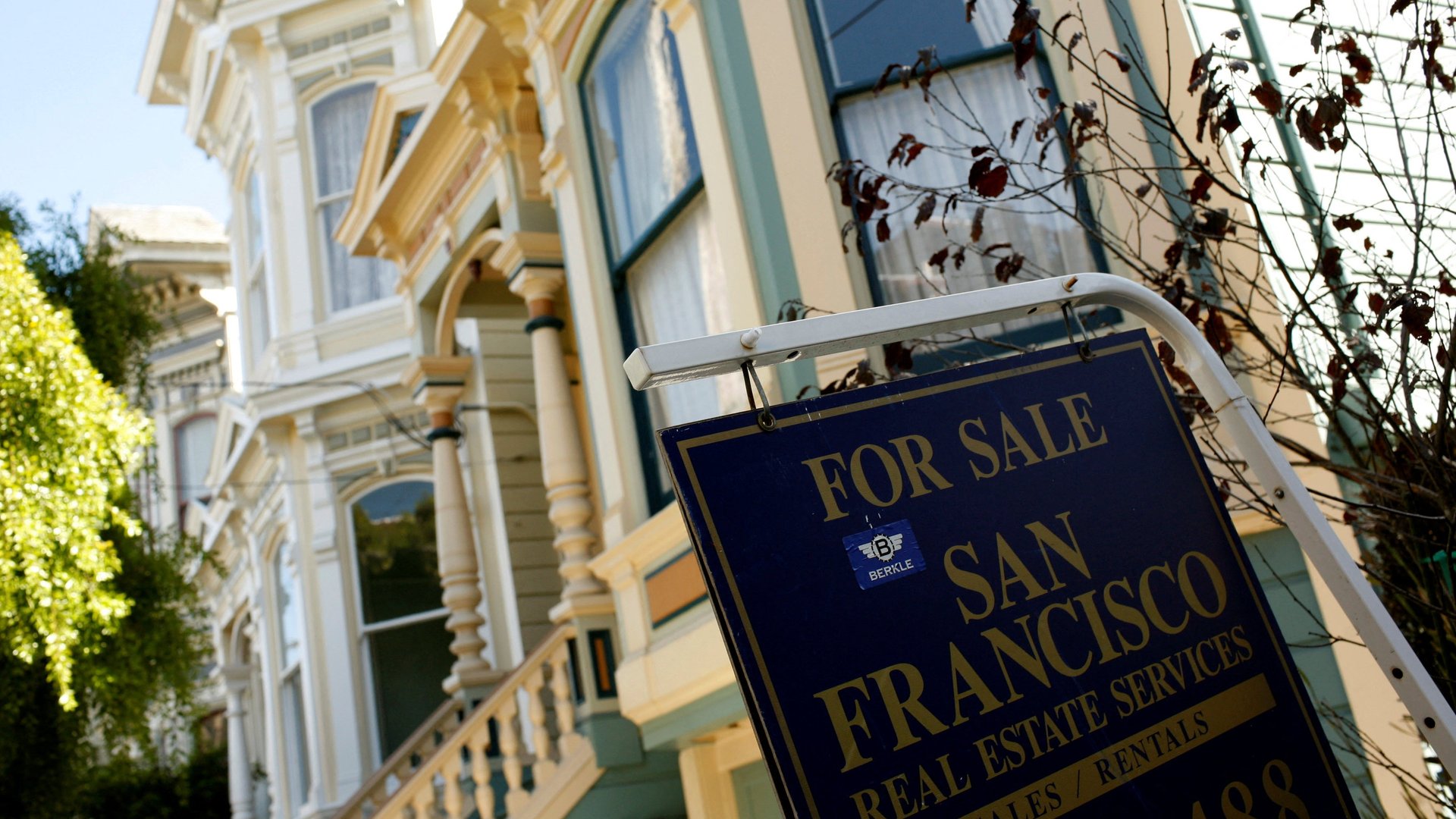Why this tightening cycle is so brutal for the US housing market
The US Federal Reserve’s efforts to rein in inflation are hitting the US housing market hard: Last month, employment in residential building fell 4.5%. In May, the number of permits for new homes fell 7%, and new homes started fell 14%.


The US Federal Reserve’s efforts to rein in inflation are hitting the US housing market hard: Last month, employment in residential building fell 4.5%. In May, the number of permits for new homes fell 7%, and new homes started fell 14%.
Arguably, that’s too hard. As the Fed started hiking in March, the average cost of borrowing to purchase a home with a 30-year fixed-rate mortgage was already rising, but it shot up to 5.8% by June. Now, it has fallen slightly to 5.3%.
At the recent peak in the federal funds rate, 2.4% in 2019, mortgage rates didn’t break 5%. Today, the Fed is paying banks 1.2% on their deposits. The last time housing credit was so expensive was when the housing bubble popped in 2008.
And while home prices might be expected to fall with fewer buyers, they haven’t dropped much yet. That has potential first-time buyers feeling locked out of the market at a time when housing affordability is at the center of America’s economic challenges. The home-building sector is also a key part of the overall US economy, fueling demand for skilled labor, commodities, and household goods.
Why mortgage rates shot up
The situation is different now from recent tightening cycles for several reasons, according to Michael Neal, a housing finance expert at the Urban Institute. A big one is inflation: Fixed-rate lenders suffer the most when inflation rises, so they have been raising prices in the face of persistent inflation. The Fed has also allowed its holdings of mortgage-backed securities to fall, which means mortgage lenders have fewer buyers for their loans.
Finally, there is the effect of the Fed’s own statements about what it will do next: The last hiking cycle was an attempt to slowly walk the economy back into normalcy after the Great Recession. This time around, Fed Chair Jay Powell has made clear he is out to break inflation, and lenders are taking him seriously.
However, the more serious the Fed is about hiking, the more reason there is to worry about a recession. Rising rents have driven inflation concerns, but the tricky nature of measuring housing costs means that the Fed is likely behind the curve—it looks mainly at an average of all rents, not leases signed in real-time.
And rates aren’t the only thing driving housing costs. Restrictions on building in high-demand areas, difficulties obtaining lumber and other raw materials, and competition from large investment funds all prop up home prices in ways the Fed can’t do much to counteract.
Is this time different?
People who already own homes are lucky to have an inflation hedge on one of the biggest expenditures households make. But renters face a difficult time buying their first home: Borrowing to buy the current median-priced home in the US at $428,700 with a 20% downpayment costs about $1,446 a month at 3%, but $1,904 a month at 5.3%—nearly $500 more a month, and an extra $165,000 over the course of the loan.
One worry is that this is a return to normal: A 5% or 6% mortgage rate wouldn’t have been unusual in the early 2000s, and would have been downright cheap in the 1990s. Recent homebuyers have benefited from both low interest rates and low inflation. While the Fed aims to kill inflation with higher rates, the question is whether rates will stay that high in the future.
Markets aren’t betting on it, at least, with longer-term bonds running at lower interest rates. The big question is whether broader trends will conspire to drive rates back down. Slowing population growth and immigration restrictions will limit economic growth, setting the table for lower rates down the line—unless productivity growth accelerates.
“There is very little evidence since the 80s or 70s that mortgage rates stabilize at some particular rate,” Neal explains. “What we’ve seen instead is that mortgage rates have been on a long-term downward trend.”